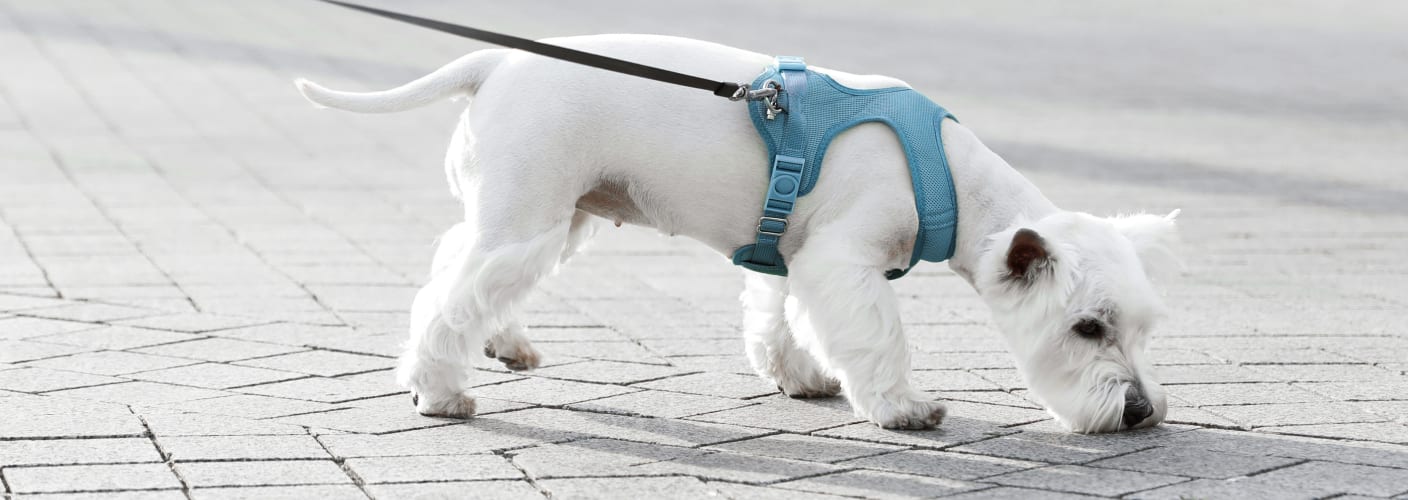If your dog has sustained a joint or bone injury, they may require orthopedic surgery. In today's article, our Erin vets define orthopedic surgery and discuss the different types of procedures, along with what you can expect from your pup's recovery process.
What is orthopedic surgery and when is it required for dogs?
Orthopedic surgery is the most effective procedure for repairing damaged joints or bones in dogs and restoring health. If your dog has had orthopedic surgery, they will need a lengthy recovery and rehabilitation period. The cost of surgery can range widely depending on the type of procedure required.
A dog who has broken or fractured a bone due to trauma, disease, or a congenital condition that affects the joint may need orthopedic surgery. If your dog is suffering from a condition or injury that requires advanced specialized care, your vet will refer you to a veterinary surgeon near Erin.
What can you expect from your dog's orthopedic surgery?
When a dog's ligament, joint or tendon needs to be repaired, a vet or veterinary surgeon will perform orthopedic surgery. In most cases, pins, screws, bone plates, an artificial joint, nylon, or casts are used to repair the damage during the procedure. Dogs in good health are excellent candidates for orthopedic procedures like bone and joint correction surgery. For the surgery to be successful, your vet will need to conduct pre-operative blood work as part of a pre-surgical exam.
What are the different types of orthopedic surgeries?
Types of orthopedic surgery include:
Tibial Plateau Leveling Osteotomy – TPLO is one of the most commonly performed orthopedic surgeries on dogs with a torn cranial cruciate ligament, also referred to as a dog's anterior cruciate ligament (ACL).
Medial Patellar Luxation – MPL surgery corrects the luxation, or "popping out" of the kneecap (also known as the patella). A congenital malformation can apply abnormal forces to the kneecap, resulting in a luxating patella that slides out of its normal groove (referred to as the patellar groove).
Femoral Head Osteotomy – FHO is the surgical removal of the femoral head and neck. In layman's terms, the "ball" portion of the ball-and-socket joint that makes up the hip joint would be removed during this procedure.
Total Hip Replacement – During a THR procedure, diseased cartilage and the bone of the hip joint are replaced with a prosthesis or "artificial joint".
Lateral Suture – The concept for a lateral suture procedure is fairly simple. A single fiber plastic line called a mono-filament will be used to stabilize the knee on the outside of the joint. This strong suture or line outside of the joint re-establishes the stability the joint requires after the ACL has been torn.
Tibial Tuberosity Advancement – A TTA surgical procedure repairs a torn cranial cruciate ligament (CCL). Unlike other procedures, the goal of this surgery is not to recreate or repair the ligament, but rather to change the dynamics of the knee so that the cranial cruciate ligament is no longer required for joint stability.
Cruciate: Cruciate surgery is used to repair a torn cranial cruciate ligament (CCL) in the stifle (knee), which functions similarly to the ACL in humans. CCL surgery is the most common orthopedic surgery performed in dogs, accounting for approximately 85% of all orthopedic surgeries performed each year.
How much does orthopedic surgery for dogs cost?
The cost of orthopedic surgery for dogs can vary widely depending on a variety of factors, like your dog's specific condition, any potential complications that may need to be considered, pre-surgical diagnostics that may be required, and more. Your vet or veterinary surgeon can provide a cost estimate for your pet's procedure.
How successful are orthopedic surgeries for dogs?
Orthopedic surgeries commonly have ideal success rates and are the most common method of treatment for dogs experiencing injuries to their joints and ligaments.
What can you expect during your dog's recovery from orthopedic surgery?
Once your dog has returned home from orthopedic surgery, you can expect to follow strict instructions for about two weeks. During this time, your dog will need to be restricted in movement. Following the first two weeks, the dog's activity will be limited to four months, and physical therapy may be advised.
How can you prevent the need for veterinary orthopedic surgery?
Many causes of bone surgery are related to unexpected injury or hereditary joint conditions, so preventing the need for veterinary orthopedic surgery is important for pet owners.
Taking basic canine safety precautions, like providing a fenced-in yard and using a leash outside the home, is critical to avoiding broken bones and fractures. The only way to prevent hereditary or congenital causes is to halt all reproductive practices in canines known to be affected by the condition(s). Canines with hereditary joint complications, such as hip or elbow dysplasia, benefit most from spaying and neutering.
Note: The advice provided in this post is intended for informational purposes and does not constitute medical advice regarding pets. For an accurate diagnosis of your pet's condition, please make an appointment with your vet.

